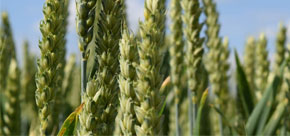Crops & Sugar Beet Standards
STORAGE Version 5.1 (modified)
Click to view
Key – Those standards which have greater significance (all other standards are normal)
Recommendation – Those which do not affect certification
New – A completely new standard which the member must now adhere to
Revised – A standard that has changed and requires the member to take some different or additional action to before
Upgraded – The standard has been upgraded to a Key standard or from a Recommendation to a full standard
Appendix – Referenced in ‘How you will be measured’. Indicates that additional information is provided in the Appendices, which are available at the end of each section.
CR.ST.1 Key
All equipment which comes into contact with grain must be thoroughly cleaned prior to use
How you will be measured
CR.ST.1.a
CR.ST.1.b
CR.ST.2 Key
The condition of crops must be determined as they go into store and an assessment made of storage and conditioning requirements
How you will be measured
CR.ST.2.a
CR.ST.2.b
AHDB Grain Storage Guide
CR.ST.3 Key
The condition of stored crops must be monitored
How you will be measured
CR.ST.3.a
CR.ST.3.b
CR.ST.3.c
CR.ST.3.d
Grain storage records
CR.ST.4
Moisture meters and temperature probes must be calibrated annually and records kept
Calibration records
CR.ST.5 Key
Insect traps must be used in stored crops
How you will be measured
CR.ST.5.a
CR.ST.5.b
CR.ST.6
Drying equipment must be regularly maintained
Maintenance records
CR.ST.7
Drying equipment must be operated in line with manufacturer’s instructions in a manner that prevents contamination
How you will be measured
CR.ST.7.a
CR.ST.7.b
- Operator manual
- Fuel purchase records
CR.ST.8 Key
Walls, floors and horizontal surfaces within storage, holding or reception facilities must be clean prior to use
How you will be measured
CR.ST.8.a
CR.ST.8.b
CR.ST.8.c
Store cleaning records
CR.ST.9 Key
If livestock buildings are intended for use as crop storage or temporary holding facilities they must be thoroughly cleaned, power washed and sanitised with a combined food grade detergent/disinfectant and left to dry before use
Store cleaning records
CR.ST.10
Stores must be inspected immediately prior to use
How you will be measured
CR.ST.10.a
CR.ST.11 Key
Buildings must be weatherproof
How you will be measured
CR.ST.11.a
CR.ST.12 Key
Controls must be in place to protect crops from contamination with any broken glass or hard plastic
How you will be measured
CR.ST.12.a
CR.ST.13
Loading areas outside crop storage must be maintained in a clean and well drained condition
How you will be measured
CR.ST.13.a
CR.ST.14 Key
Temporary stores can only be used for the storage of crops until the 31st October
How you will be measured
CR.ST.14.a
- Derogation from CB
- Record to show all grain moved from temporary store by 31st October
CR.ST.15 Key
The roofs, floors and walls of temporary stores must be of a suitable construction which prevents crops becoming contaminated with earth, stones or debris
How you will be measured
CR.ST.15.a
CR.ST.15.b
CR.ST.15.c
CR.ST.16 Key
Buildings must have suitable and solid roofs, floors, walls and doors
How you will be measured
CR.ST.16.a
CR.ST.16.b
CR.ST.16.c
CR.ST.16.d
CR.ST.17 Key
The holding of grain outside must only occur in exceptional circumstances, for a maximum of five days
How you will be measured
CR.ST.17.a
CR.ST.17.b
CR.ST.17.c
CR.ST.17.d
- Outside holding records
- Derogation from CB
CR.ST.18
GM crops or other GM material must not be stored with non-GM crops unless separated by a rigid physical barrier
CR.ST.19
Treated seed must not contaminate stored grain
How you will be measured
CR.ST.19.a
CR.ST.19.b
More Standards
Download Crops and Sugar Beet Standards Manual
Download the changes to the Crops and Sugar Beet Standards from 1 February 2025
- ST.1 – Examples of equipment include any used for harvesting, transporting, handling, conveying, loading etc….
- ST.2 – AHDB Grain Storage Guide: https://ahdb.org.uk/grainstorage, Safe Storage Calculator: https://ahdb.org.uk/safe-storage-time-calculator
- ST.4 – Not applicable where crops are moving immediately from farm to a central store. Calibration can be carried out on-farm using reference samples
- ST.17 – Exceptional circumstances could include delayed collection outside grower’s control where there are no storage facilities, grain waiting to be dried during a wet harvest, breakdown of a drier
- ST.18 – An example of GM material includes some animal feeds
